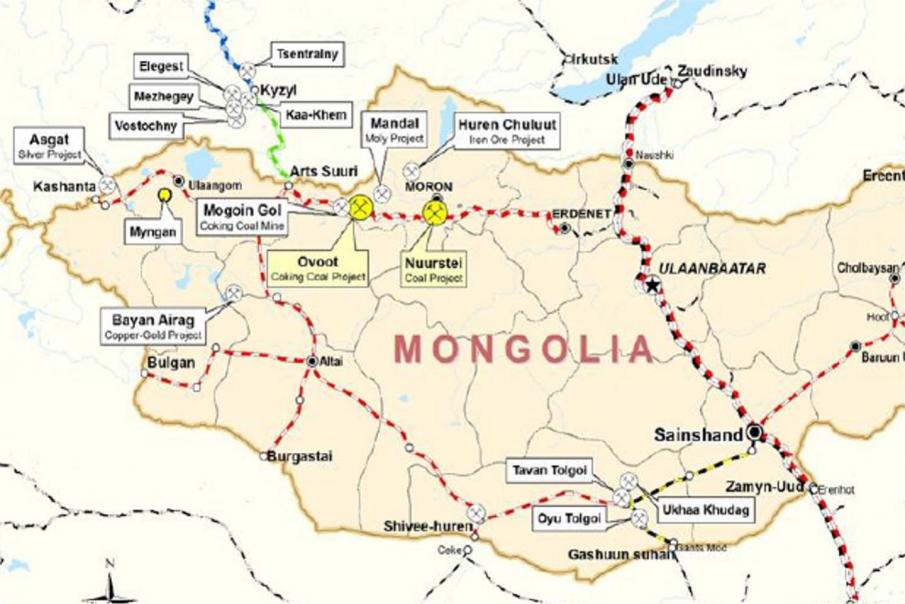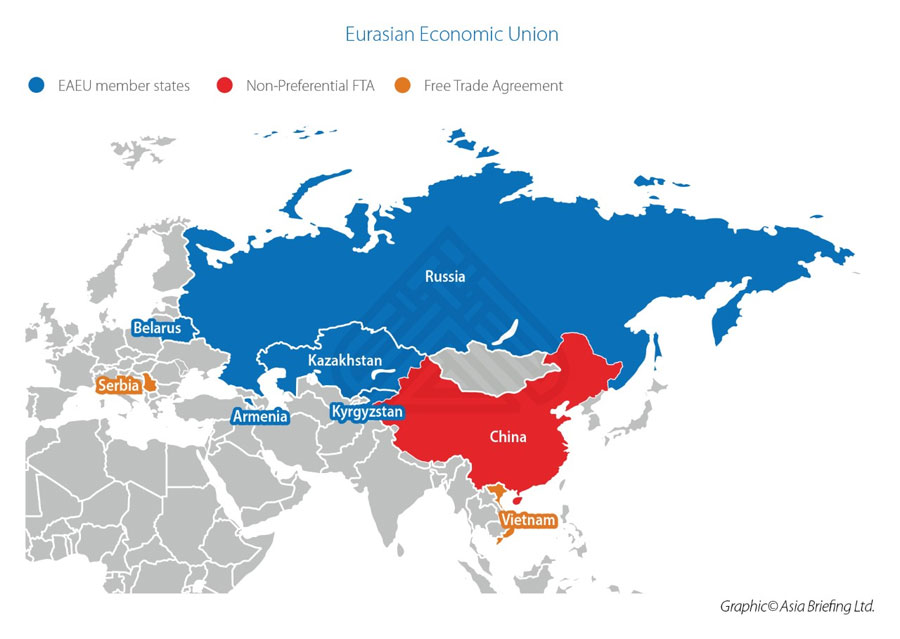Russia To Upgrade Mongolian Rail Links Between Russia And China, Joint Investment Fund Set Up
Mongolian Bilateral Trade Rises 21% With Russia & 27% With China, As Better Rail Connectivity Is Urged
Op/Ed By Chris Devonshire-Ellis
Russian President Vladimir Putin has stated that Russia’s State Rail operator RZD will modernize Mongolia’s rail network to develop the country’s transit potential, in an interview with Mongolia’s Udriin Sonin newspaper. He has just visited Ulaan Baatar ahead of the Far Eastern Economic Forum currently underway in Vladivostok, at which the Mongolia President, Khaltmaagiin Battulga is also present.
“In our bilateral dialogue, we are focusing on the transport and infrastructure sector and on tapping Mongolia’s transit potential. To this end, Russian Railways is planning the modernization of the Ulaan-Baatar Railway, which is the country’s key transport artery.” stated the Russian President. The Mongolian rail network runs on Russian, and not Chinese rail gauges.
This also suggests developments elsewhere to further expand the Mongolian rail network could be afoot. Australia’s Aspire Mining have a proposed route that would lead off the main Trans-Mongolia line, and head West across to its massive Ovoot coal mining operations. With both the Chinese and Russian Governments recognizing the need to better develop trans-Mongolian connectivity, an inter-Governmental agreement was signed off in Ulaan Baatar last year that allows for Mongolian sourced freight to be transported to, and via Russia at discounts of 66.4% for the next 25 years. This has lead to the development of feasibility plans to extend the main Russia-China line to Erdenet, to be underwritten by Aspire.
Russian & Chinese Bilateral Trade With Mongolia Increasing
In terms of Russian-Mongolian bilateral trade, President Putin said that trade turnover increased by 21% to US$1.65 billion in 2018, and grew another 11.8% in January-June this year to US$800 million. Mongolian bilateral trade with China meanwhile hit US$8.4 billion in 2018, an increase of 26.8% YoY. Mongolia’s exports to China grew by US$811.2 million, or 13.1%, while imports increased by US$1.5 billion or 35.5%.
President Putin also stated that a joint working group was created between the Eurasian Economic Commission (the Head body of the Eurasian Economic Union) and Mongolia in 2015. Among its tasks is increasing the efficiency of mutual trade, including by removing barriers, improving customs administration and harmonizing sanitary standards. “Often, simplifying technical requirements gives a much greater boost to business than reducing duties.” President Putin said. The Eurasian Economic Union comprises Armenia, Belarus, Kazakhstan, Kyrgyzstan and Russia and sits between Western China and the European Union. China has a non-preferential Free Trade Agreement with the EAEU however this is not yet product specific. Should this become so, then it would make sense for Mongolia to also agree an FTA with the EAEU as it can then take advantage of its rail transport connections between China and Europe and add its own produce.
However, at present Mongolia prefers to sit between the two and remain somewhat impartial to both. But, as demand for Mongolia’s huge mineral and energy reserves increases, this may soon become a moot point as at some point both Russia and China will require access, as will demand from the Mongolian economy. An interview (in Russian) with President Putin about Mongolia and the just signed permanent treaty on friendship and extensive strategic partnership between the two countries can be seen on the Kremlin website here
Joint Russian-Mongolian Investment Cooperation Fund Established
The two countries have also agreed to set up a Joint Investment Fund, Kirill Dmitriev, the Head of the Russian Direct Investment Fund (RDIF) stated. “Today, the Russian Direct Investment Fund is signing an important agreement with the Mongolian Investment Fund on the establishment of the Russian-Mongolian Investment Cooperation Fund,” he said. The fund’s goal is to significantly increase the volume of investment cooperation. “Now it’s literally tens of millions of dollars a year, but we believe that it can be hundreds of millions of dollars a year.” Dmitriev noted. Currently, more and more Russian-Mongolian projects emerge in the field of new technologies and transport infrastructure, and this joint fund “will help Russian companies to better cooperate with Mongolian ones,” he added. President Vladimir Putin said that the countries intend to jointly implement new projects, including in infrastructure, mining, energy, and agriculture. “The intergovernmental commission on trade, economic, scientific and technical cooperation is actively engaged in this. These projects will be financed by the Russian-Mongolian Investment Cooperation Fund. The agreement to create this fund was concluded by Russian Direct Investment Fund and its Mongolian partners during our visit. I would like to note that the investments will be made mainly in the national currencies of our countries.” the Russian President said. The fund is expected to receive an initial US$1 billion for funding projects.
Related Reading
- China, Mongolia, and Russia Increase Trans-National Rail Traffic by 150 percent
- Russia-Mongolia-China Road Corridor to be Ready in 2018
About Us
Silk Road Briefing is produced by Dezan Shira & Associates. The firm provides business intelligence, legal advisory, tax advisory and on-going legal, financial and business operational support to investors throughout China, India, ASEAN and Russia, and has 28 offices throughout the region. We also provide advice for Belt & Road project facilitation. To contact us please email silkroad@dezshira.com or visit us at www.dezshira.com







